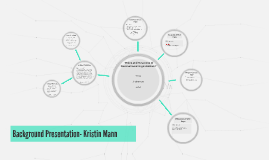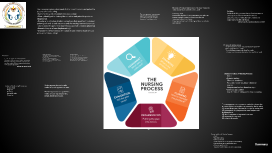Dark background Nursing Process
Transcript: The steps of the nursing process are not actually separate items but, rather, are parts of a whole, used to identify needs, to establish priorities of care, to maximize strengths, and to resolve actual or potential alterations in human responses to health and illness, thereby promoting health to the highest level possible for each patient. Definition: A critical thinking process that professional nurses use to apply the best available evidence to caregiving and promoting human functions and responses to health and illness. (American Nurses Association, 2010) The nursing process is a systematic, patient-centered, goal-oriented method of caring that provides a framework for nursing practice The process provides a framework that enables the nurse and patient to accomplish the following: • Systematically collect patient data (assessing) • Clearly identify patient strengths and actual and potential problems (diagnosing) • Develop a holistic plan of individualized care that specifies the desired patient goals and related outcomes and the nursing interventions most likely to assist the patient to meet those expected outcomes (planning) • Execute the plan of care (implementing) • Evaluate the effectiveness of the plan of care in terms of patient goal achievement (evaluating) Purposes of nursing process To identify a client’s health status and actual or potential health care problems or needs. To establish plans to meet the identified needs. To deliver specific nursing interventions to meet those needs. Introduction Historical perspective ... 1974- Gebbie and Lavin made nursing diagnosis a separate step in the process 1973- The steps of the nursing process were legitimized 1991, 1998, and 2004- The six Standards of Practice were revised (assessment, diagnosis, outcome identification, planning, implementation, and evaluation). Historical perspective 1955- Hall first used the term “nursing process” 1960s- Nursing theorists began to describe nursing as a distinct entity 1967- Yura and Walsh published the first comprehensive book on nursing process with four steps in the nursing process: assessment, planning, intervention, and evaluation ".....the nursing process is educative and therapeutic when nurse and patient can come to know and to respect each other, as persons who are alike, and yet different, as persons who share in the solution of problems." Hildegarde Peplau (1909) Characteristics of Nursing Process Cyclic Dynamic nature, Client centeredness Focus on problem solving and decision making Interpersonal and collaborative style Universal applicability Use of critical thinking and clinical reasoning. 5 steps of the Nursing Process are Assessment Diagnosis Planning Implementation Evaluation Nursing process is a systematic method of providing care to clients. The nursing process is a systematic method of planning and providing individualized nursing care. Mr. N. Sathieswaran (Gr I NT) The nursing process is a systematic method that directs the nurse and patient, as together they accomplish the following: (1) assess the patient to determine the need for nursing care, (2) determine nursing diagnoses for actual and potential health problems, (3) identify expected outcomes and plan care, (4) implement the care, and (5) evaluate the results. Characteristics of Nursing Process • Cyclic • Dynamic nature, • Client centered • Focus on problem solving and decision making • Interpersonal and collaborative style • Universal applicability • Use of critical thinking and clinical reasoning. STEP 1 ASSESSMENT A The systematic and continuous collection, organization, validation, documentation and communication of data (information) Make a judgment about the patient’s health status, ability to manage his or her own healthcare, and need for nursing. Plan individualized holistic care that draws on patient strengths and is responsive to changes in the patient’s conditions. Purpose 1. Establish the database: • Nursing history • Physical assessment • Review of patient record and nursing literature • Consultation with patient’s support people and healthcare professionals 2. Continuously update the database. 3. Validate data. 4. Communicate data. Activities 1. Initial nursing assessment 2. Problem-focused assessment 3. Emergency assessment 4. Time-lapsed reassessment Types Initial nursing assessment: Performed within specified time after admission. To establish a complete database for problem identification. Eg: Nursing admission assessment Problem-focused assessment : To determine the status of a specific problem identified in an earlier assessment. Eg: hourly checking of vital signs of fever patient Emergency assessment: During emergency situation to identify any life threatening situation. Eg: Rapid assessment of an individual’s airway, breathing status, and circulation during a cardiac arrest. Time-lapsed reassessment: Several months after initial assessment. To compare the client’s current health status with the data previously obtained.

















